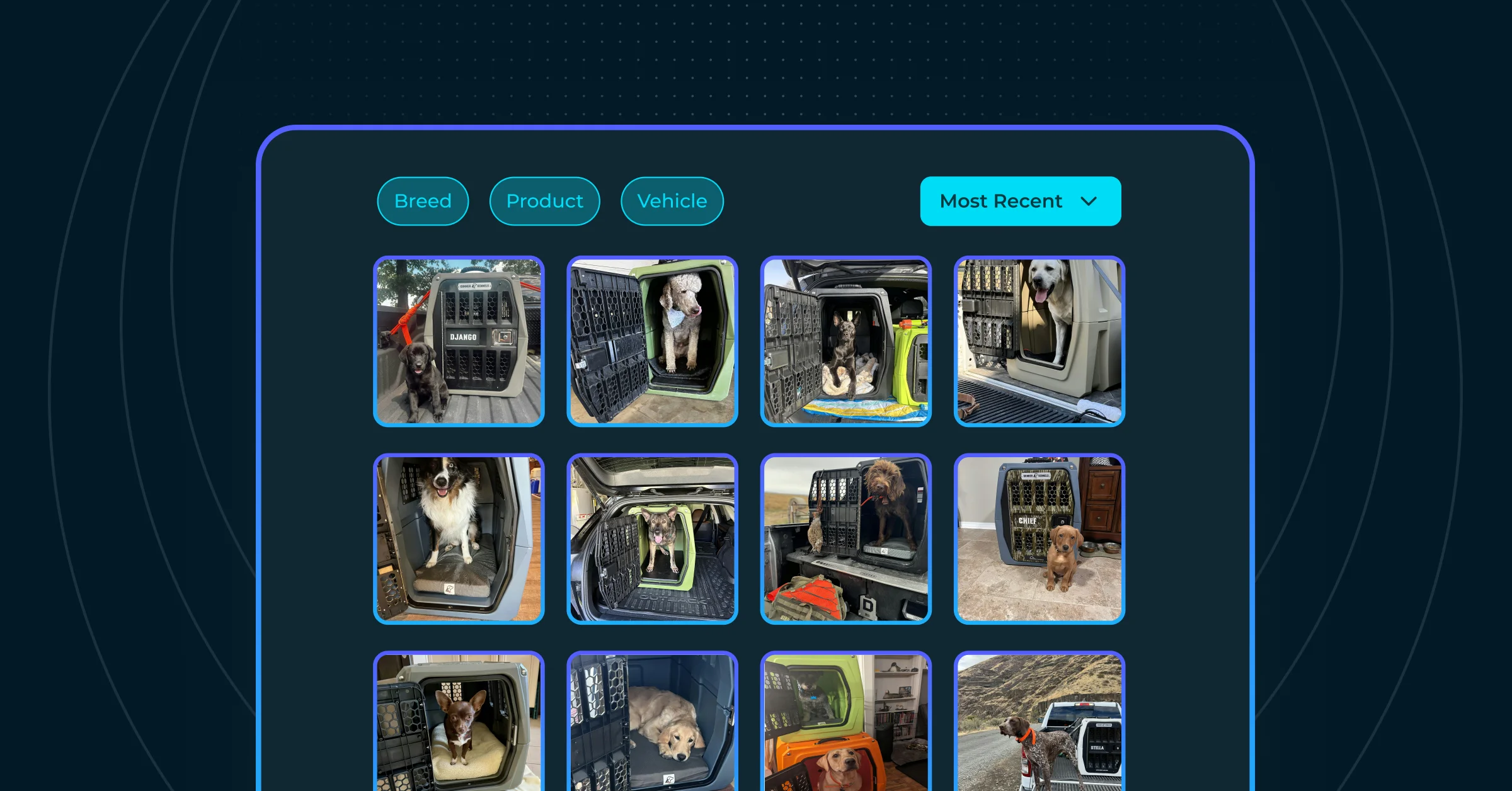Scaling UGC Without Losing Control
UGC so powerful because there is no script, no perfect lighting, and no professional touch-up. Just real usage and honest presentation.

Why Visual UGC Is Your Most Persuasive Asset
And the numbers back it up:
93% of consumers say UGC influences their purchase decisions more than brand-created visuals.
UGC content drives 5–7x higher engagement on social media than polished brand assets.
E-commerce websites with embedded customer-submitted visuals see conversion lifts of up to 20%.
That authenticity builds trust at scale—but only if your UGC strategy can grow without becoming a mess. To fully unlock its value, brands must implement a system that not only captures great content but also maintains quality and control as submissions increase.
The Hidden Costs of Unmanaged UGC
More UGC isn't always better. Without a framework to manage it, even the most enthusiastic submissions can harm your brand instead of help it. As your UGC library grows, it becomes harder to maintain consistency, clarity, and legality.
The consequences of an unmanaged UGC strategy include:
Brand erosion:
Visuals that are poorly lit, off-brand, or irrelevant degrade the shopping experience.
Operational bottlenecks:
Manually reviewing every piece of content becomes impossible beyond a certain scale.
Disorganized content libraries:
If your team can't find the right visuals when building campaigns, you lose speed and cohesion.
Legal gray areas:
Failing to secure usage rights can result in copyright disputes or takedown requests that damage trust.
⚠️ Sidebar: When "Authentic" Becomes Off-Brand
A luxury fashion brand highlights UGC with cluttered apartment backdrops, diminishing its premium aesthetic.
A health supplement company features a customer video demonstrating incorrect product usage.
A beauty retailer posts an image from a real customer who later demands it be removed for lack of consent.
Without governance, authenticity starts to look more like carelessness—and that's a risk no brand can afford.
Systems for Scaling Without Sacrificing Quality
To grow your UGC library without losing control, you need a structured, repeatable process. This doesn't mean over-sanitizing your content—but it does mean knowing what's acceptable, where it should go, and how to keep it organized.
Define Quality Standards
Develop internal benchmarks for what qualifies as "publishable." These should include:
Product is clearly visible and in focus
Lighting is sufficient and contextually appropriate
Background is neutral, clean, or brand-aligned
No inappropriate props, gestures, or filter effects
Implement Tagging Protocols
Your UGC database is only as useful as it is searchable. Create tagging standards based on:
Product SKU or category
Campaign or seasonal theme
Media type (photo, video, review quote)
Use case or customer segment (e.g., "unboxing," "lifestyle," "kids")
Automate Moderation Queues
Manual moderation alone won't scale. Use AI-based pre-filtering to:
Flag blurry, dark, or low-resolution media
Detect nudity, profanity, or off-brand elements
Prioritize high-quality submissions for human review
Secure Usage Rights at Submission
Protect your brand and respect your community by asking for publishing rights upfront. This can be as simple as:
A checkbox that confirms consent to use content across marketing channels
Linking to Terms of Service during the upload process
Organize Content into Publishing Tiers
Not all UGC is created equal. Classify approved content into categories:
Featured: Hero visuals for homepage, ad campaigns, or brand launches
Standard: Solid, high-quality assets for PDPs, email modules, and landing pages
Internal-Only: Informative or lower-quality content that's valuable for team reference, trend analysis, or pitch decks
Where and How to Publish Visual UGC
Great UGC shouldn't sit in a folder. It should be embedded across your entire customer journey to increase impact and engagement.
Key publishing opportunities include:
💡 Match UGC to Funnel Stage
Your best visual content becomes your best-performing asset—if it's placed with intent.
Best Practices for Brand-Safe UGC at Scale
A few key principles can help you grow your visual content strategy without sacrificing quality:
A brand-safe UGC program isn't just reactive—it's proactive. It anticipates needs, enforces standards, and makes it easy for your team to execute at scale.
Quick Win Checklist:
- Audit your current UGC library—tag 20 recent visuals by quality tier.
- Publish a one-page UGC style guide outlining focus, lighting, and background rules.
- Enable AI-powered pre-filtering to auto-flag blurry, dark, or off-brand content.
- Add a mandatory consent checkbox (with link to your TOS) on your UGC upload form.
- Organize approved content into "Featured" and "Standard" collections in your CMS.
